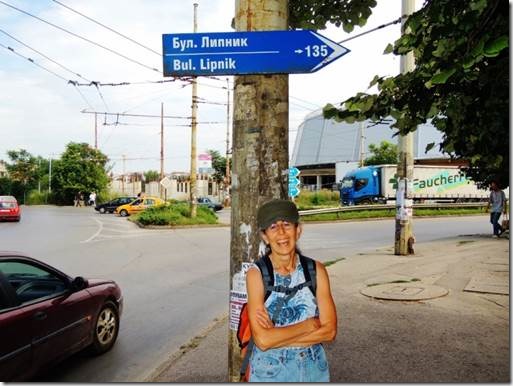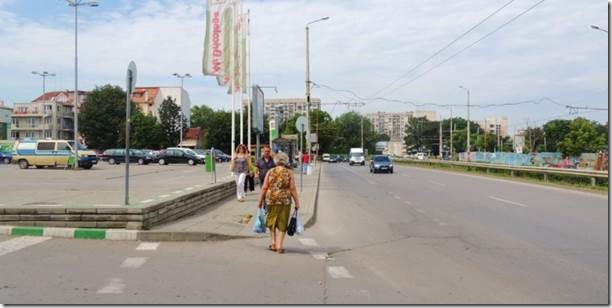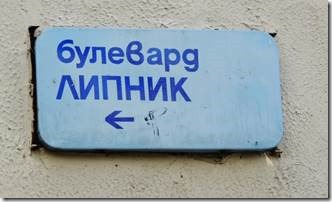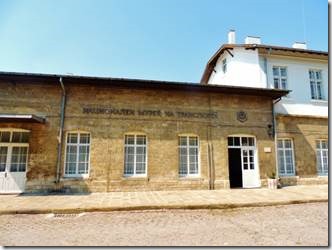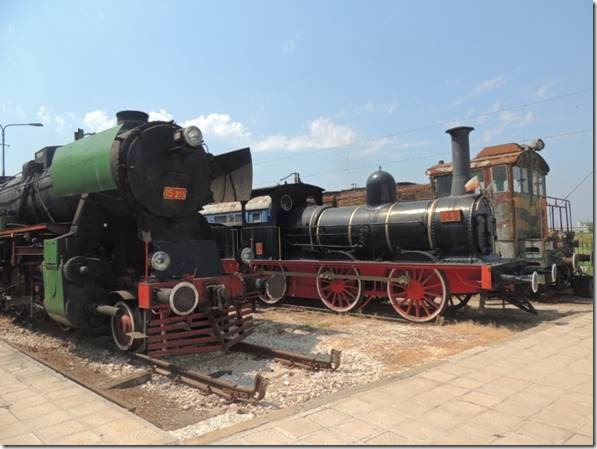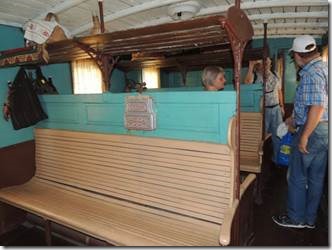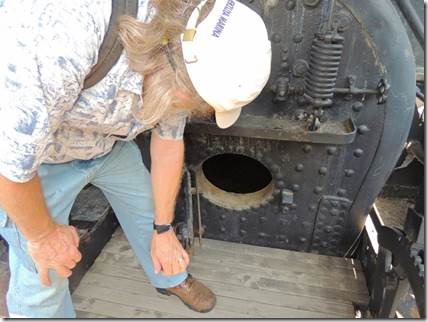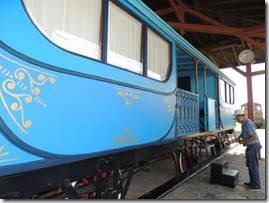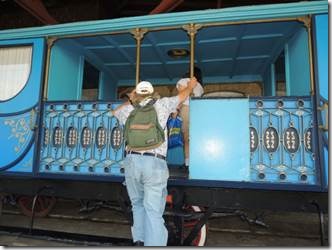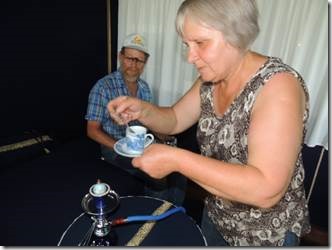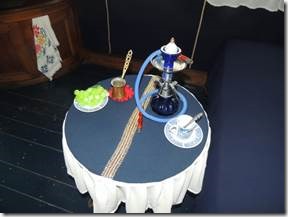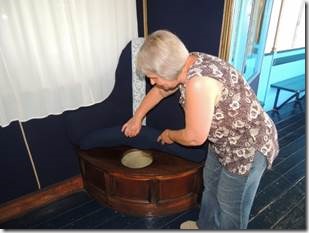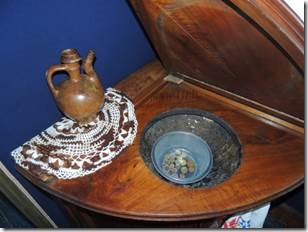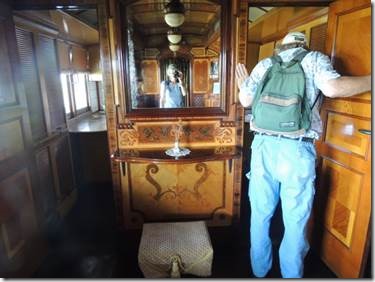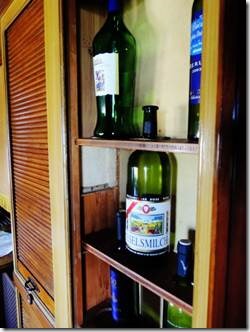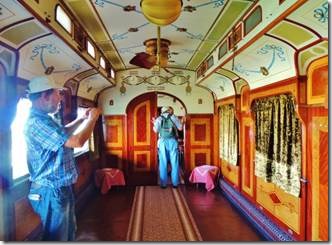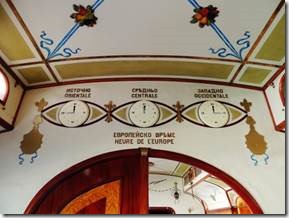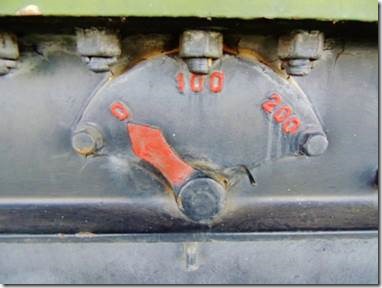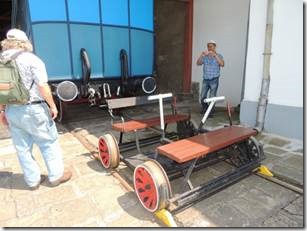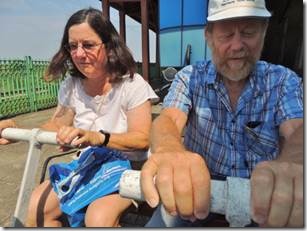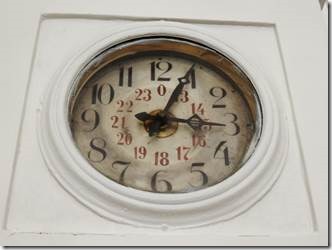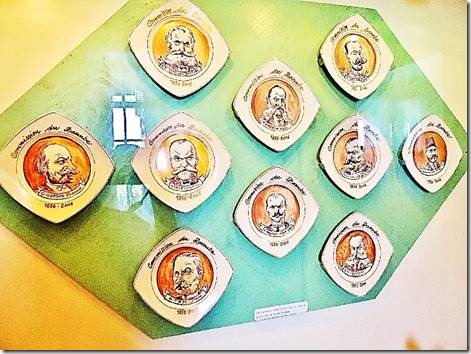Sulina, Romania
Salut
So we are now at marker 0 on the Danube. Tonight we will be in the Black Sea on our way Port Tomas also in Romania. It will be an overnight passage which thrills me no end but so it goes. In Port Thomas we will put the mast back up, clear out from Romania and get ready to head back to Varna Bulgaria. From Varna we’ll go on to Sozopol, Bulgaria where we’ll clear out and from there to Istanbul. In this email we’re back in Ruse with its Lipnik connection. So next email from Port Thomas
Ru
Ps These train photos are for everyone but especially Cousin Ernest and our Boat Builder Bill, both train aficionados.
Ruse is a large port city on the Danube River in Northeast Bulgaria and an administrative center of the eponymous municipality and region. Located 75 kilometers from the Romanian capital of Bucharest, the city is a strategic intermodal and logistic center of the country. With a population of 147,817 (according to National Statistical Institute data as of 2013) it is the fifth largest city in Bulgaria. Unemployment in the region of Ruse is 10.7% (as of March 2014), compared with an average unemployment rate of 12.2% in the country.
The proximity of the Danube River has always been important for the city’s development – ever since ancient times. This is the place where the Roman fortified military camp of Sexaginta Prista, meaning “the city of 60 ships”, was established in the 1st century AD. Since the 16th century the city has been known under its Ottoman name of Ruschuk. Under the Ottoman rule, Ruse was one of the major cities of the Ottoman Empire, which influenced its economic and cultural development. Ruse was first in many respects: it is the place where the first railway station in Bulgaria was built, a modern printing house was opened, a newspaper was started. The city was the seat of many consulates too.
After 1878 Ruse was the largest city in the Bulgarian Principality; its economy developed rapidly and that changed the overall look of the city. The connection with Europe that the city provided through the Danube River was beneficial to its development. Due to the beautiful architecture and interior of its buildings designed by Italian, Austrian, German and Bulgarian architects Ruse is called “little Vienna”.
One of the symbols of the city is Dohodno Zdanie (meaning “profitable building”): a beautiful public building in the center of Ruse. It was built in 1901-1902 and impresses with its magnificent façade and seven sculptures on the roof. Other landmarks include the Regional Historical Museum and the Urban Lifestyle Museum, which is also known as Calliope’s House. One of the most interesting landmarks in Ruse is the remains of Sexaginta Prista fortress. Ruse is home to Bulgaria’s only National Transport Museum, which is located in the building of the first railway station in Bu
lgaria. The beautiful Nature Park of Rusenski Lom is situated 20 kilometers southwest of the city on an area of 3,408 hectares.
The city’s location is particularly advantageous in transportation and geographical terms. Besides being a busy cargo and passenger port, the city is also a border check-point of Bulgaria’s road and railroad connections with the whole of Eastern Europe and parts of Central Europe.
The main industrial sectors in Ruse are machine-building and metal processing (40% of the total volume), followed by the chemical, food-and-beverage and textile industries.
Ruse is the biggest Bulgarian port on the Danube in terms of import, export and passenger traffic. It is the seat of Bulgarian River Shipping Company, which services three passenger lines: to Vidin, Svishtov and Silistra. These lines have 19 ports. A big cargo, passenger and tourist flow passes through Druzhba Bridge, which connects Ruse and Giurgiu.
http://jessicafund.bg/en/category/projects/ruse/
|
When reading about Ruse I saw a Lipnik Nature Reserve just nearby. We didn’t make it there, but did walk to find Lipnik Boulevard. Both seem to be connected to the Lipa tree or Linden tree. Slavic mythology “In old Slavic mythology, the linden (lipa, as called in all Slavic languages) was considered a sacred tree.[15] Particularly in Poland, many villages have a name "Święta Lipka" (or similar), which literally means "Holy Lime". To this day, the tree is a national emblem of Slovakia, Slovenia, the Czech Republic, and the Sorbs.[citation needed] Lipa gave name to the traditional Slavic name for the month of June (Croatian, lipanj) or July (Polish, lipiec, Ukrainian "lypen’/липень"). It is also the root for the German city of Leipzig, taken from the Sorbian name lipsk.[16] The Croatian currency, kuna, consists of 100 lipa (Tilia). "Lipa" was also a proposed name for Slovenian currency in 1990, however the name "tolar" ultimately prevailed.[17] In the Slavic Orthodox Christian world, limewood was the preferred wood for panel icon painting. The icons by the hand of Andrei Rublev, including the Holy Trinity (Hospitality of Abraham), and The Savior, now in the State Tretyakov Gallery in Moscow, are painted on linden wood. Its wood was chosen for its ability to be sanded very smooth and for its resistance to warping once seasoned. The southern Slovenian village of "Lipica" signifies little Lime tree and has given its name to the Lipizzan horse breed. http://en.wikipedia.org/wiki/Tilia#Slavic_mythology http://www.poloniamusic.com/Folk_Lipka_Zielona.html more about the Lipa tree and some Polish folks songs that tell about it. http://www.angelfire.com/mi4/polcrt/Linden.html THE LINDEN TREE – Lore and Significance Written by Margaret Odrowaz-Sypniewska Ode to a Linden Tree Dear Guest, sit down beneath my leaves and take your rest. The sun will not strike you there, I do insist, Though it beat from its noonday height, and its direct rays Should pierce such scattered shade as a tree bestows. There, a cooling breeze is always blowing from the field; There, nightingales and blackbirds their tuneful tales unfold. It’s from my fragrant blossom that the timeless bees Take the honey, which later ennobles your lordly feasts; Whilst I, by my soft murmurs, can easily contrive That gentle sleep should overtake the unsuspecting fugitive. It’s true, I bear no fruit; but in my master’s eyes My worth exceeds the richest scion of the Hesperides. Written by "Squire of Czamolas" – a vernacular poet http://www.angelfire.com/mi4/polcrt/PolNobility.html Липа lipa = Linden Tree The English suffix -nik is of Slavic origin. It approximately corresponds to the suffix "-er" and nearly always denotes an agent noun (that is, it describes a person related to the thing, state, habit, or action described by the word to which the suffix is attached).[1] In the cases where a native English language coinage may occur, the "-nik"-word often bears an ironic connotation. |
|
Lipnik Boulevard…. But no trees at all now, but maybe once upon a time. |
|
I noticed this sign which says Lipnik in Cyrillic though I have no idea what the top word is. |
|
One day we set off for the Transportation Museum because that attracted Rick and Randal. The city of Rousse is the place where you will find Bulgaria’s only transportation museum. The national museum of transport was created to commemorate 100 years since the existence of railway transportation in Bulgaria. It is located in the building of the first city railway station and opened doors for visitors in 1996. Rousse’s railway station, where the museum is located, was constructed from 1864 to 1866. The railway station functioned until 1954. Today, the station has been recognized as historic monument. The three museum sections present the development of railway transportation, shipping and communications. Communication technologies, photographs, documents, personal belongings of transportation workers and slogans will show you the history of transportation in Bulgaria. Some of the exhibit items are unique. You will see Sultanie, the special car that sultan Abdul Aziz specially ordered in 1866. The car impresses with its rich decorations. Its color is blue and the exterior is covered in ornaments. Another interesting exhibition items is one of the first locomotives imported in Bulgaria. It was created in Newcastle in 1866 and was used for the transportation of passengers from Rousse to Varna until 1901. You will also see the car that tsar Ferdinand ordered. The museum also preserves the first movable television station in Bulgaria. The museum library contains tons of information about transportation in Bulgaria through the years. The national transportation museum is situated on the bank of the Danube, at Bratia Obretenovi 5 street. It welcomes visitors each day apart from Sunday from 9 am to 5.30 pm. |
|
Another interesting exhibition items is one of the first locomotives imported in Bulgaria. It was created in Newcastle in 1866 and was used for the transportation of passengers from Rousse to Varna until 1901. |
|
I think I can, I think I can…. |
|
Some of the exhibit items are unique. You will see Sultanie, the special car that sultan Abdul Aziz specially ordered in 1866. The car impresses with its rich decorations. Its color is blue and the exterior is covered in ornaments. |
|
We had to knock on the door of the museum to gain attention of the custodian who looked to be living in part of the museum. She waved to us from her window, changed her clothes and then came to let us in and give us a tour. Here she is showing us how tea was served to Abdul Aziz and where he and his guests could relax and smoke their water pipe. |
|
Not so private but here’s the tollette and wash basin. I had some coins so dropped them into the bucket in the sink. Our guide motioned for me to take them back out so I did. Then she motioned for me to put them back in. So I did. Then 3 times she poured water from the pitcher over my hands which went down the drain ( coint bucket had been moved.) I have no idea why but there you have it. |
|
You will also see the car that tsar Ferdinand ordered. The discrepancy between rich and poor may be in part what caused some of the problems leading to WW 1. |
|
Oriental, Central (time in Europe) and Occidental time. The Occident is the west so both have the same time showing on the clock. |
|
Air pressure gage for the brake on the side of the car |
|
I always wanted to do this. Rick and Mary pulled one way down the short piece of track and Randal and I pulled us back. |
|
Very useful clock in the station museum |
|
Men connected to Bulgarian transportation history. I thought these caricature plates were quite funny though I’m not sure they were intended to be seen that way. |
We all enjoyed our visit to the museum. And that was after a really long hike trying to find it as our map made it look someplace it really wasn’t. It was also mid-afternoon and really hot. But the blog below is probably correct. The writer actually wasn’t lucky enough to rouse the guide so never got into the museum or had the tour.”
“The museum is hosted in the old railways station of Ruse, and it was formerly known as National Transport Museum, founded in June 1954. However, this denomination was clearly ambitious, as railways was basically the single subject of the museum. It was appropriately renamed National Museum of Railway Transport and Communications on the 26th June 1996, commemorating the 100th anniversary of railroads in Bulgaria, and by then the building was declared a historical landmark.
Among the exhibits outside the building are more than ten steam engines, including the oldest steam engine preserved in the country, built in England in 1865, and various railroad carriages, including the personal carriages of the Kings Ferdinand of Bulgaria and Boris III of Bulgaria, as well as the carriage of the Turkish sultan of 1866.
Sadly, as of 2007 the museum is underfunded, the heritage engines and railcars are stored in the open air without almost any maintenance, and the humid air from the nearby Danube accelerates significantly their decay. “ http://www.waymarking.com/

